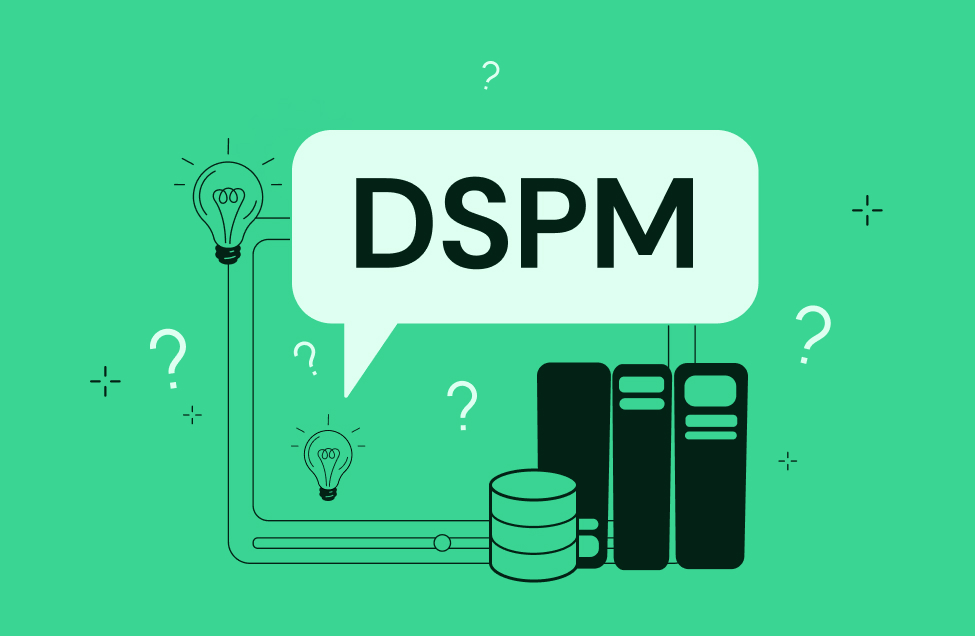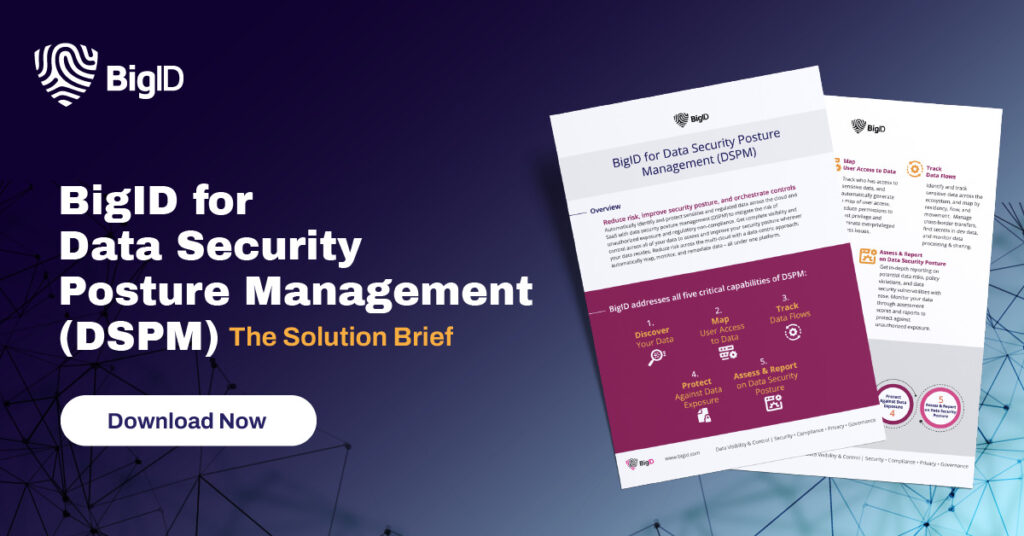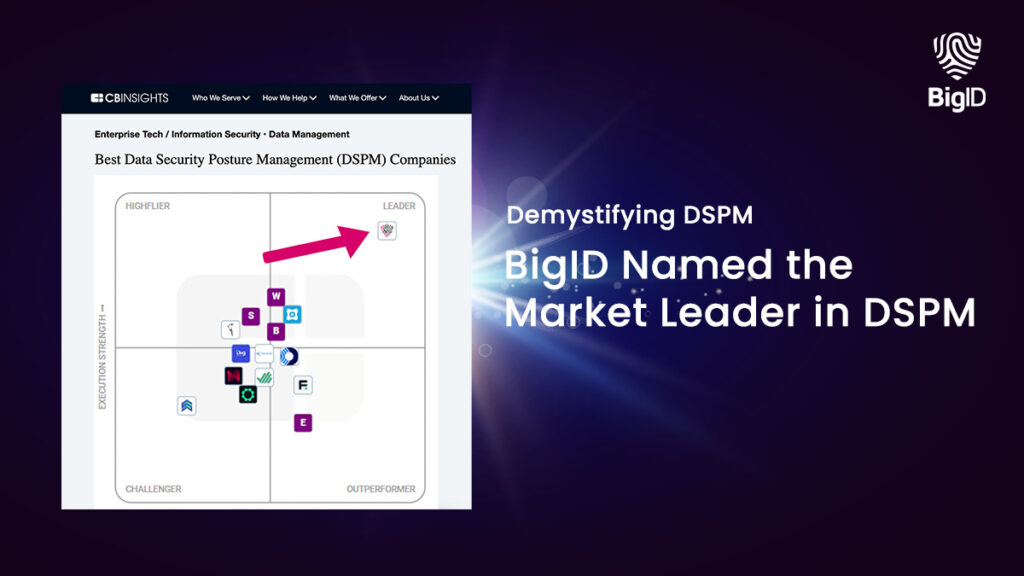
Introduction
In today’s digital landscape, ensuring the security and protection of data has become a top priority for businesses. Two important tools commonly used are Cloud Security Posture Management (CSPM) and Data Security and Protection Management (DSPM).
Overview of Cloud Security Posture Management (CSPM)
Cloud Security Posture Management (CSPM) refers to continuously monitoring and evaluating the security posture of cloud resources and services. It helps organizations identify security risks, misconfigurations, and potential vulnerabilities within their cloud infrastructure. CSPM solutions provide real-time visibility and control over cloud assets, enabling businesses to enforce security best practices and compliance standards. By automating security assessments and offering remediation recommendations, CSPM solutions help organizations reduce the risk of data breaches and ensure the integrity of their cloud environment.
Overview of Data Security and Protection Management (DSPM)
Data Security and Protection Management (DSPM) is a comprehensive approach that safeguards sensitive data throughout its lifecycle. It encompasses processes, technologies, and policies to protect data from unauthorized access, alteration, or disclosure. DSPM solutions enable organizations to classify data based on sensitivity and apply appropriate security measures accordingly. They also provide encryption mechanisms, access controls, and data loss prevention capabilities to mitigate the risk of data breaches. By implementing DSPM solutions, businesses can ensure compliance with data protection regulations, maintain customer trust, and protect their valuable assets.
Overall, CSPM and DSPM are both vital components of an effective data security strategy. While CSPM primarily focuses on securing cloud infrastructure, DSPM takes a broader approach by addressing data protection at every stage. By utilizing both CSPM and DSPM solutions, businesses can achieve a comprehensive and robust security posture, minimizing the risk of data breaches and maintaining the confidentiality, integrity, and availability of their valuable data.

CSPM vs DSPM: Understanding the Difference
CSPM: Benefits and Features
Cloud Security Posture Management (CSPM) is critical in ensuring the security and integrity of cloud resources and services. By continuously monitoring and evaluating the security posture of the cloud infrastructure, CSPM solutions provide several benefits to organizations:
- Identifying Security Risks: CSPM enables businesses to identify misconfigurations, vulnerabilities, and potential security risks within their cloud environment. This proactive approach allows for timely detection and remediation of security issues.
- Ensuring Compliance: CSPM solutions help organizations enforce security best practices and compliance standards, ensuring adherence to regulations such as GDPR, HIPAA, and PCI-DSS. This ensures that sensitive data is handled in a secure and compliant manner.
- Real-Time Visibility and Control: CSPM provides real-time visibility into the security posture of cloud assets, offering insights on resource utilization, access controls, and user activities. This level of visibility enables organizations to take immediate action in response to security events or policy violations.
- Automating Security Assessments: CSPM automates security assessments and provides remediation recommendations, reducing the workload on security teams and improving operational efficiency. This allows organizations to focus on more strategic security initiatives.
Challenges and Considerations of Implementing CSPM
While CSPM offers significant benefits, there are some challenges and considerations that organizations need to be aware of when implementing CSPM solutions:
- Complexity of Cloud Environments: Cloud environments can be highly complex, with numerous interconnected components and services. CSPM solutions must provide comprehensive coverage and adaptability to handle the dynamic nature of cloud infrastructures.
- Limited Visibility into Third-Party Services: Organizations often rely on third-party services and applications within their cloud environment. However, CSPM solutions may have limited visibility into the security posture of these third-party services, creating potential blind spots.
- Integration with Existing Security Tools: Integrating CSPM solutions with existing security tools and processes can be challenging. It requires coordination and cooperation between teams and may involve custom integration to ensure seamless data sharing and correlation.
- Ongoing Monitoring and Maintenance: CSPM is not a one-time activity; it requires continuous monitoring and maintenance to keep up with the changing cloud landscape. Organizations need to allocate resources and establish processes to ensure the effectiveness of their CSPM initiatives.
In conclusion, CSPM is a valuable tool in securing cloud resources and maintaining a strong security posture. It provides benefits such as risk identification, compliance enforcement, real-time visibility, and automation. However, organizations must also consider the challenges of implementing CSPM, including complexity, limited visibility into third-party services, integration, and ongoing monitoring and maintenance. By addressing these considerations, organizations can effectively leverage CSPM to enhance their cloud security strategy.

DSPM
Benefits and Features of DSPM
Data Security Posture Management (DSPM) is a crucial component in safeguarding sensitive data and ensuring compliance within an organization’s digital ecosystem. By providing real-time monitoring and assessment of data security, DSPM solutions offer several benefits and essential features to businesses:
- Identifying Data Security Risks: DSPM enables organizations to identify potential vulnerabilities and security risks associated with their data assets. It detects unauthorized access, data leaks, and ensures data integrity, allowing organisations to respond promptly and mitigate any security threats.
- Ensuring Compliance: DSPM solutions assist organizations in adhering to data protection regulations and compliance standards, such as GDPR and CCPA. By continuously monitoring data usage, access controls, and encryption practices, DSPM helps organizations maintain compliance and avoid penalties.
- Monitoring Data Activity: DSPM provides real-time visibility into data activities, including data access, movement, and transfer. This comprehensive monitoring allows organizations to detect any unusual data behavior, such as suspicious or unauthorized data access, ensuring data confidentiality and preventing data breaches.
- Automated Data Security Audits: DSPM automates the process of conducting data security audits and assessments. It identifies potential vulnerabilities or non-compliant practices within the data environment and provides recommendations for remediation, reducing the burden on security teams and ensuring ongoing compliance.
Challenges and Considerations of Implementing DSPM
While DSPM offers significant benefits, organizations should be aware of the challenges and considerations when implementing DSPM solutions:
- Data Complexity: Organizations generate and store large volumes of data across various systems, applications, and cloud environments. Managing and securing this complex data landscape can be challenging, requiring robust DSPM solutions that offer comprehensive coverage and adaptability.
- Data Privacy: With the increasing emphasis on data privacy, organizations must ensure that their DSPM solutions comply with privacy regulations and protect sensitive customer information. This includes implementing strong encryption, access controls, and data anonymization techniques to safeguard data privacy.
- Integration with Existing Security Infrastructure: Integrating DSPM solutions with existing security infrastructure, such as SIEM (Security Information and Event Management) systems, can be complex. It requires coordination and collaboration between different teams to ensure seamless data sharing and unified security monitoring.
- Continuous Monitoring and Maintenance: DSPM is an ongoing process that requires regular monitoring and maintenance to adapt to evolving threats and changes in the data environment. Organizations must allocate resources and establish procedures to ensure the effectiveness of their DSPM initiatives.
In conclusion, DSPM is vital in securing data assets and maintaining compliance within organizations. It offers benefits such as risk identification, compliance enforcement, real-time data monitoring, and automated audits. However, organizations should consider challenges about data complexity, privacy, integration, and continuous monitoring when implementing DSPM. By addressing these considerations, organizations can effectively leverage DSPM to enhance their data security posture and protect sensitive information.
CSPM vs DSPM: Comparison
Key differences between CSPM and DSPM
CSPM (Cloud Security Posture Management) and DSPM (Data Security Posture Management) are both essential components in safeguarding organizations’ digital ecosystem. However, they focus on different aspects of security and offer distinct features. Here are the key differences between the two:
- Scope: CSPM primarily focuses on securing cloud infrastructure and resources, ensuring that they are configured correctly and compliant with security best practices. It identifies misconfigurations, monitors access controls, and detects vulnerabilities in the cloud environment. On the other hand, DSPM focuses on securing sensitive data and ensuring compliance by monitoring data activity, detecting unauthorized access, and ensuring data integrity.
- Primary Focus: CSPM’s primary focus is to assess and manage security risks associated with cloud resources, including computing instances, storage, and networks. It provides organizations with visibility into their cloud security posture and helps them maintain compliance. DSPM, on the other hand, primarily focuses on data security, monitoring data usage, access controls, and encryption practices to protect sensitive information from unauthorized access and data breaches.
- Tools and Capabilities: CSPM solutions provide features such as continuous monitoring of cloud resources, automated security assessments, and remediation recommendations. They also offer integration with cloud service providers’ security tools and APIs. DSPM solutions, on the other hand, provide real-time monitoring of data activity, data access controls, and automated data security audits. They focus on data discovery, classification, and protection.
Which solution is best for your organization’s needs?
Whether CSPM or DSPM is the best solution for your organization depends on your specific security requirements. If your organization heavily relies on cloud infrastructure and resources, CSPM is crucial to ensure proper configuration, compliance, and protection against cloud-related security risks. It allows you to detect misconfigurations, assess vulnerabilities, and enforce security best practices in the cloud environment.
On the other hand, if your organization deals with sensitive data and has compliance obligations, DSPM is essential to protect that data from unauthorized access, monitor data activity, and maintain data integrity. It helps you enforce access controls, detect unusual data behavior, and automate data security audits.
In many cases, organizations may need both CSPM and DSPM to ensure comprehensive security and compliance. It is important to assess your organization’s specific needs, evaluate the risks involved, and consider both solutions to develop a holistic security strategy.
In conclusion, CSPM and DSPM play different roles in securing organizations’ digital ecosystem. CSPM focuses on cloud infrastructure security, while DSPM emphasizes protecting sensitive data. Understanding the key differences between the two solutions and evaluating your organization’s specific needs will help you make an informed decision on which solution or combination of solutions is best for your organization’s security requirements.

Case Studies
Real-world examples of organizations using CSPM or DSPM
When it comes to securing their digital ecosystem, many organizations have successfully utilized CSPM and DSPM solutions. These real-world examples showcase the effectiveness of these security measures in different contexts.
- Company A: Company A, a global cloud service provider, implemented CSPM to ensure the security and compliance of their customers’ cloud environments. By leveraging CSPM tools, they were able to continuously monitor and assess their cloud resources for misconfigurations, vulnerabilities, and compliance issues. This proactive approach helped them address security risks promptly and maintain a strong cloud security posture.
- Company B: Company B, a financial institution, recognized the importance of protecting sensitive data and ensuring compliance with industry regulations. They implemented DSPM solutions to monitor data activity, enforce access controls, and detect unauthorized access to their database. DSPM tools helped them identify and address potential data breaches, ensuring the integrity and confidentiality of their customers’ information.
Success stories and lessons learned
The implementation of CSPM and DSPM solutions has yielded several success stories and valuable lessons for organizations:
- Successful Compliance: Many organizations using CSPM and DSPM solutions have been able to achieve and maintain compliance with industry regulations. Through continuous monitoring and data security audits, these organizations have successfully passed compliance audits, avoiding hefty penalties and reputational damage.
- Improved Incident Response: CSPM and DSPM solutions enable organizations to detect security incidents in real-time, allowing for prompt incident response. The ability to identify misconfigurations, vulnerabilities, unauthorized access, or data breaches early on enables organizations to mitigate risks and minimize the potential impact of security incidents.
- Enhanced Data Protection: DSPM solutions have proven to be crucial in protecting sensitive data from unauthorized access. By implementing robust access controls, monitoring data activity, and automating data security audits, organizations can ensure the confidentiality and integrity of their valuable information.
- Organizational Efficiency: CSPM and DSPM solutions automate security assessments and provide real-time insights into the security posture of cloud resources and data. This automation saves time for security teams, so they can focus on important security projects instead of manual tasks.
Real-world examples of organizations using CSPM and DSPM solutions demonstrate the importance and effectiveness of these security measures. They emphasize the importance of these solutions in ensuring the security of cloud infrastructure, safeguarding sensitive data, complying with regulations, and facilitating efficient security operations. The success stories and lessons learned emphasize the need for organizations to prioritize comprehensive security strategies that include both CSPM and DSPM solutions to address the unique security challenges they face.
Conclusion
When it comes to securing the digital ecosystem of organizations, both Cloud Security Posture Management (CSPM) and Data Security and Protection Management (DSPM) solutions play critical roles. CSPM is about monitoring and evaluating the security and compliance of cloud resources. It ensures that there are no misconfigurations, vulnerabilities, or compliance issues. On the other hand, DSPM solutions are designed to protect sensitive data by monitoring data activity, enforcing access controls, and detecting unauthorized access.
Factors to consider when choosing a cloud security and data protection solution:
- Compliance: Organizations must consider whether the solution helps them achieve and maintain compliance with industry regulations. Continuous monitoring and data security audits are crucial for successfully passing compliance audits.
- Incident Response: The ability to detect security incidents in real-time and enable prompt incident response is essential. Solutions should have capabilities to identify misconfigurations, vulnerabilities, unauthorized access, or data breaches to mitigate risks effectively.
- Data Protection: DSPM solutions protect sensitive data from unauthorized access. Implementing strong access controls, monitoring data activity, and automating security audits safeguard valuable information, ensuring its confidentiality and integrity.
- Organizational Efficiency: Consider solutions that automate security assessments and provide real-time insights into the security posture of cloud resources and data. This automation frees up valuable time for security teams to focus on strategic security initiatives.
In conclusion, organizations must prioritize comprehensive security strategies that include both CSPM and DSPM solutions to address the unique security challenges they face. These solutions provide effective measures for securing cloud infrastructure, protecting sensitive data, maintaining compliance, and enabling efficient security operations.




